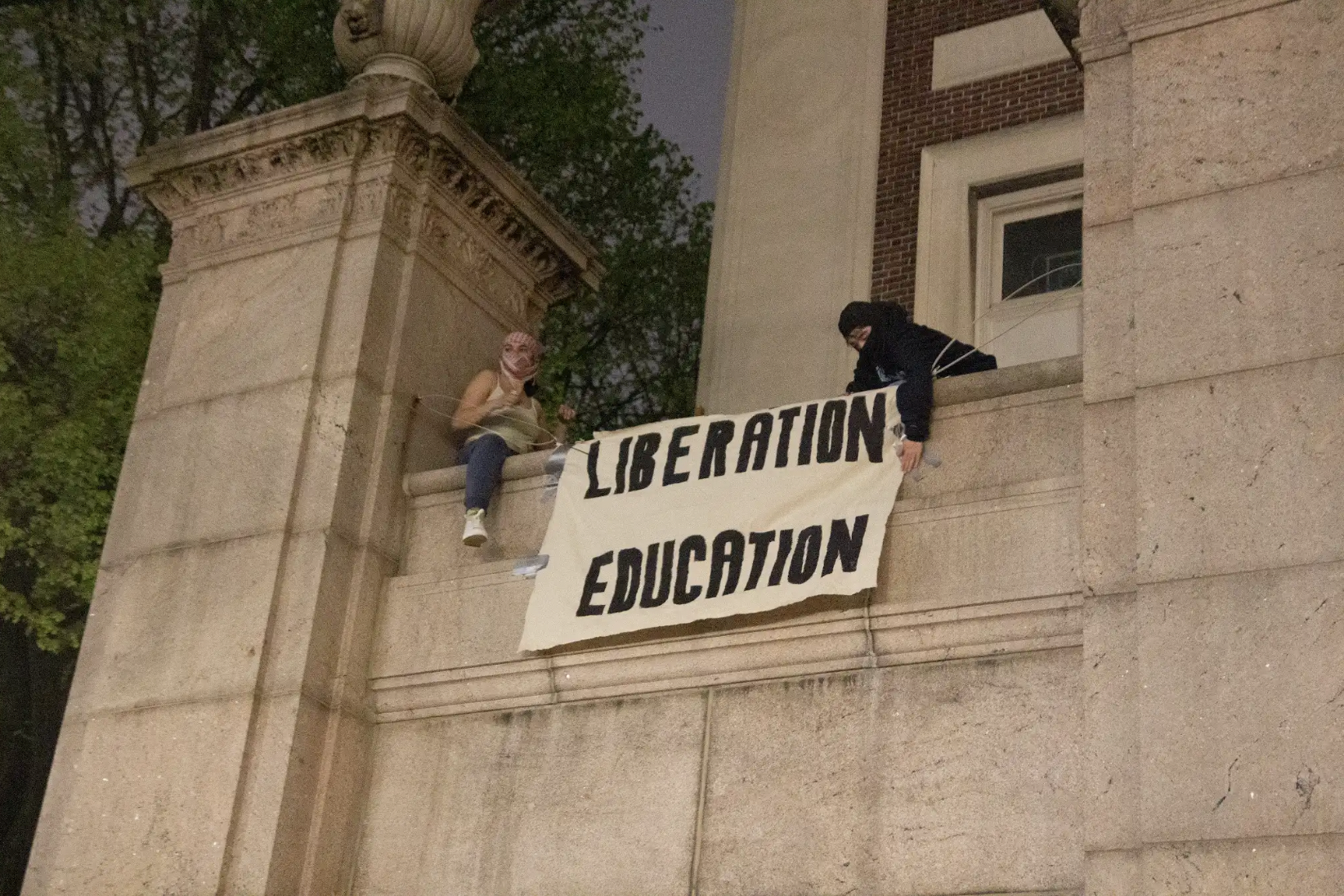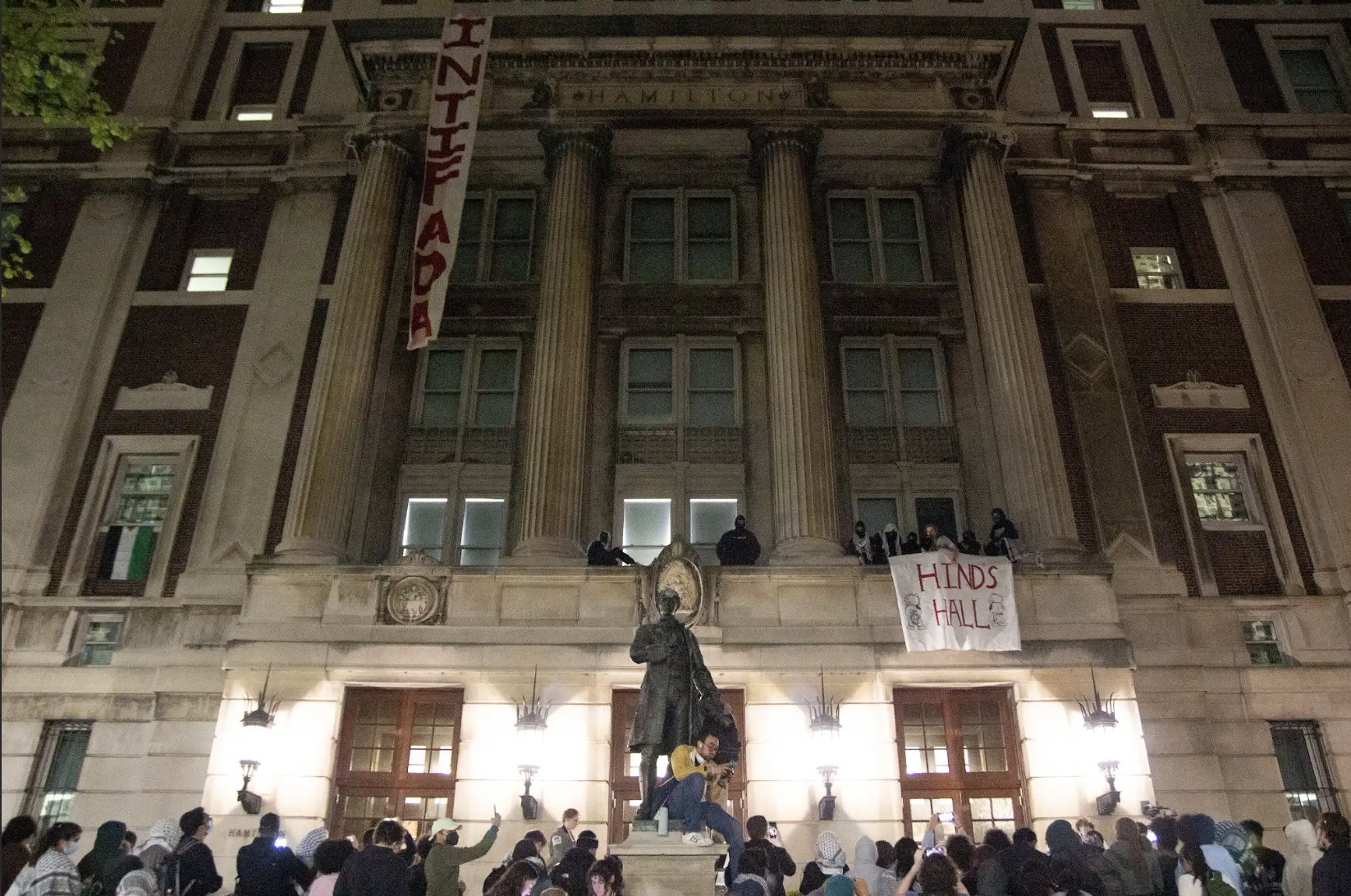
Two protestors put up a banner at Hamilton Hall after they occupied the building. (Credit:
Indy Scholtens)
April 30 marks the second week of pro-Palestine protests at Columbia University. Over night, student protesters entered and barricaded themselves inside Hamilton Hall, an academic building housing Columbia College, accelerating their standoff with the administration.
A little before 6:30 a.m., an email was sent from Columbia President Minouche Shafik announcing that access to campus would be restricted to students residing in dorms and essential staff. It remains unclear whether law enforcement will be brought onto campus to remove the protesters.
Just after midnight, the campus was filled with hundreds of student protesters marching to Hamilton Hall. Dozens of pro-Palestine protesters entered the building, carrying in metal gates and zip ties to secure the doors and block the entrances.

Student protestors occupied Hamilton Hall.(Credit: Indy Scholtens)
Once inside, they smashed some windows and stacked wooden chairs against the doors. The majority of protesters remained outside, forming human chains in front of the doors. They also barricaded the building exterior, using everything from trash cans to metal tables up the steps.
Protesters have hung a sign from windows on the building’s upper floors. It read “Hinds Hall” and is a tribute to Hind Rajab, a 6-year-old Palestinian child who was found dead in a car days after she called emergency services for aid in Gaza.
The occupation comes after recent actions by the administration. On April 29, Shafik said by email that negotiations had failed and that the university would not divest from Israel. Following this announcement, the school issued protesters a notice to vacate their encampment by the afternoon, or risk suspension.
The protesters are calling for the university to divest from companies that profit from Israel such as arms and defense manufacturers Lockheed Martin and Boeing. One of Columbia’s trustees, Jeh Johnson, is on the board of Lockheed Martin.
Hamilton Hall was previously occupied in 1968 during the anti-Vietnam war protests on campus on the same day, April 30. That Tuesday, more than 50 years ago, the NYPD entered campus and removed the students from the building. A total of 712 arrests were made, and over 100 people were injured. Now, in 2024, it’s unclear how the university plans to remove the student protesters from the occupied building or whether further arrests will take place.
Claire Davenport was there through the night and has more details. Listen:
About the author(s)
Claire Davenport is a master's student at Columbia University School of Journalism with a focus on audio and healthcare.



